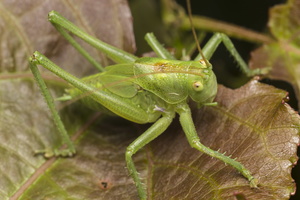- sort orderDefault
Photo title, A → Z
Photo title, Z → A
✔ Date created, new → old
Date created, old → new
Date posted, new → old
Date posted, old → new
Visits, high → low
Random - Google Map
- map
 home / Insecta · vabzdžiai / Orthoptera · tiesiasparniai / Tettigoniidae · žiogai / Tettigonia cantans · žiogas giesmininkas
home / Insecta · vabzdžiai / Orthoptera · tiesiasparniai / Tettigoniidae · žiogai / Tettigonia cantans · žiogas giesmininkas

-
 Tettigonia cantans nymph · žiogas giesmininkas, nimfa
Tettigonia cantans nymph · žiogas giesmininkas, nimfa
-
 Tettigonia cantans nymph · žiogas giesmininkas, nimfa
Tettigonia cantans nymph · žiogas giesmininkas, nimfa
-
 Tettigonia cantans nymph · žiogas giesmininkas, nimfa
Tettigonia cantans nymph · žiogas giesmininkas, nimfa
-
 Tettigonia cantans nymph · žiogas giesmininkas, nimfa
Tettigonia cantans nymph · žiogas giesmininkas, nimfa
Tettigonia cantans · žiogas giesmininkas
- Upland Green Bush-cricket
- Zwitscher-Heupferd, Zwitscherheupferd, Zwitscherschrecke
- žiogas giesmininkas
- parastais dziedātājsienāzis
- pasikonik śpiewający
Tettigonia cantans is present in most of Europe, in the eastern Palearctic realm, in Near East and in North Africa. The distribution extends from the Pyrenees to China. In the Mediterranean region, it is restricted to the higher elevations of the mountains. It is absent from most parts of Western Europe (Great Britain, western France, most of Iberian Peninsula).
The adult males grow up to 20–30 mm long, while females reach 29–35 mm. The basic coloration of the body is usually green, with a brown stripe on the back. These grasshoppers hardly fly, their wings are shorter and wider than in the other Tettigonia species, only slightly covering the end of the abdomen. The ovipositor of the female extends beyond the tip of the wings.
Adults can be found from mid June through October. The eggs overwinter in the soil, according to literature, at least twice. They mainly feed on other insects, but also on vegetable foods. They are active from noon until night and males are detectable by their characteristic and pleasant singing (hence the Latin name cantans). The females lay eggs in moist soil. Tettigonia cantans is not endangered.
Kūnas 22-23 mm ilgio, žalias. Turi plačius trumpus antsparnius, kurie vos vos išsikiša už užpakalinių šlaunų viršūnės (skiriamasis požymis nuo žaliojo žiogo). Kiaušdėtis tiesus ir gerokai išsikiša už antsparnių. Randamas pievose, retuose krūmuose ir laukuose. Biologija panaši į žaliojo žiogo.